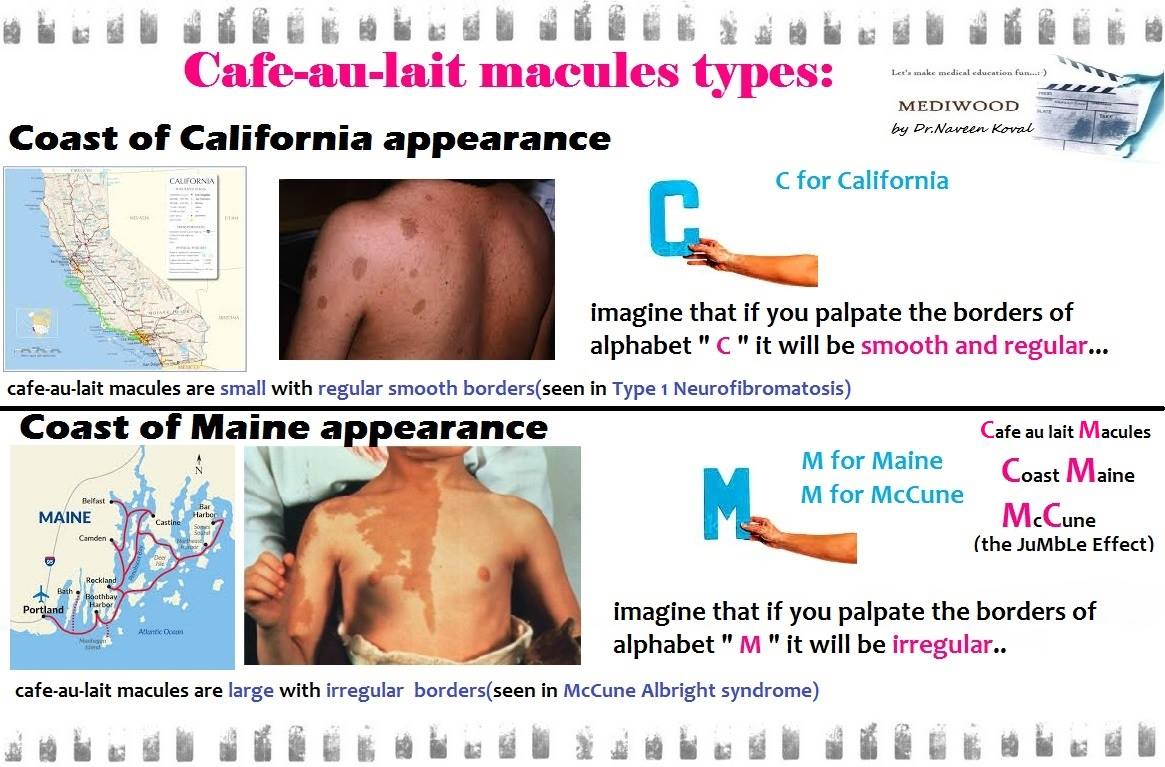A genetic syndrome caused by a G-protein activating mutation and subsequent continuous stimulation of endocrine functions
Epidemiology
Etiology
- Mosaic mutation in the GNAS1 gene on chromosome 20 (autosomal recessive inheritance)
- Some cells have a normal version of the GNAS1 gene, while other cells have the mutated version.
- Embryos only survive if mosaicism occurs.
- If the mutation occurs before fertilization, it affects all cells → incompatible with life.
Pathophysiology
Activating mutation in GNAS gene → impaired Gs-protein signaling → constitutively activated adenylate cyclase → excess production of cAMP
Clinical features
Triad of:
- Unilateral café-au-lait spots with unilateral, ragged edges
- These hyperpigmented macules can also be seen in individuals with neurofibromatosis. However, in the case of neurofibromatosis, they have smooth borders (“coast of California” appearance), those associated with fibrous dysplasia have rough, serpiginous borders (“coast of Maine” appearance).

- These hyperpigmented macules can also be seen in individuals with neurofibromatosis. However, in the case of neurofibromatosis, they have smooth borders (“coast of California” appearance), those associated with fibrous dysplasia have rough, serpiginous borders (“coast of Maine” appearance).
- Polyostotic fibrous dysplasia, usually occur on one side of the body
- Endocrinopathies
- Peripheral precocious puberty (most common)
Diagnostics
- X-rays of long bones: well-defined, lobulated lesions with a thin cortex and a radiolucent, ground-glass appearance
